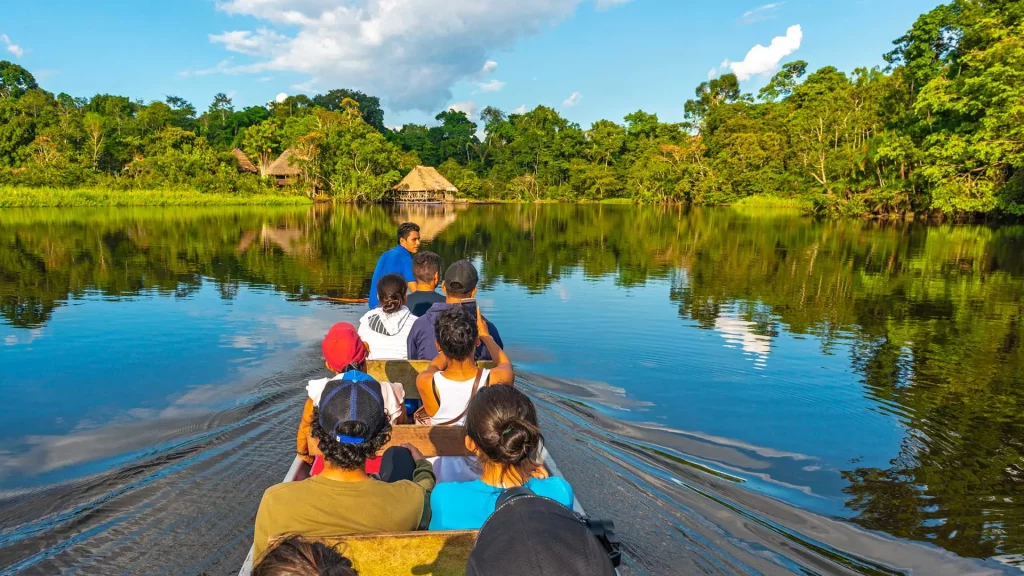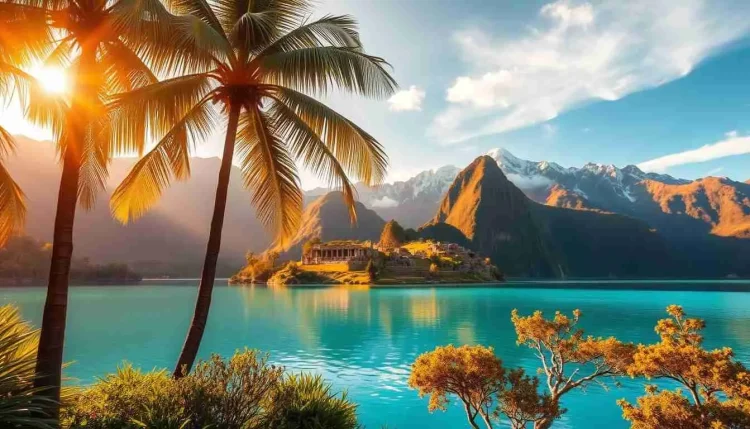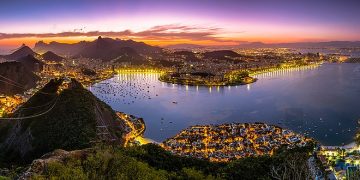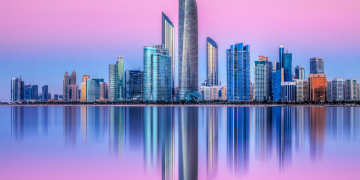Introduction: The Amazon Rainforest as a Top Destination for Nature Lovers in 2024-2025
The Amazon Rainforest, often referred to as the “lungs of the Earth,” is a destination that continues to capture the imaginations of travelers worldwide. As we approach 2024 and beyond, it remains one of the most unique and awe-inspiring natural environments on the planet. With its vast expanse covering nine countries—Brazil, Peru, Colombia, Venezuela, Ecuador, Bolivia, Guyana, Suriname, and French Guiana—the Amazon is home to an unparalleled biodiversity that includes millions of plant and animal species, many of which are found nowhere else in the world.
For nature lovers, eco-tourists, and adventure seekers, the Amazon offers an unforgettable journey into the heart of one of the world’s most vital ecosystems. The dense jungle, winding rivers, towering trees, and vibrant wildlife make it a once-in-a-lifetime destination. Yet, as appealing as it may be, the Amazon is a challenging and sometimes dangerous environment to navigate, and careful preparation is necessary to ensure a safe and sustainable trip.
In 2024-2025, the demand for eco-tourism and nature travel is expected to grow, with travelers becoming increasingly conscious of the need to protect the environment. While the Amazon continues to be an incredible draw for adventure seekers, it’s essential to approach it responsibly, with an understanding of both the risks involved and the profound impact tourism can have on this delicate ecosystem.
In this article, we will guide you through the best practices for safely exploring the Amazon Rainforest, including tips for preparation, safety, sustainability, and how to make the most of your experience with local guides. Whether you’re a seasoned adventurer or a first-time traveler, these insights will help you navigate this awe-inspiring natural wonder safely and responsibly.
Safety Tips for Navigating the Rainforest: Gear, Guides, and Preparations
The Amazon Rainforest is not a place for the unprepared. Due to its remoteness, unpredictable weather, and potential dangers, it’s vital to ensure that you have the right gear, guidance, and knowledge to make your trip both safe and enjoyable.
1. Gear You’ll Need for the Amazon
When preparing for an Amazon adventure, packing the right gear is paramount. The rainforest’s climate can be unforgiving, with intense humidity, sudden rain showers, and rough terrain. Your packing list should include:
- Lightweight, Moisture-Wicking Clothing: The humidity in the Amazon is high, so wearing clothes that wick moisture away from your skin will help you stay comfortable. Opt for long-sleeved shirts and pants to protect yourself from mosquitoes and other insects. Choose breathable fabrics like cotton or synthetic blends that dry quickly.
- Waterproof Footwear: The terrain in the rainforest can be slippery, muddy, and wet, so sturdy, waterproof boots with good grip are essential. It’s also helpful to have sandals for when you need to dry off or walk on less difficult terrain.
- Mosquito Repellent and Insect Protection: Mosquitoes and other insects are abundant in the Amazon, and they can carry diseases such as malaria and dengue fever. Bring a high-quality insect repellent with DEET (or a natural alternative like citronella) and apply it regularly. A mosquito net for sleeping can also be a life-saver.
- Rain Gear: Expect frequent rain showers, so pack a lightweight, breathable rain jacket or poncho. A waterproof backpack or dry bags to keep your valuables dry are also crucial.
- Sunscreen and Hat: Although you’ll be surrounded by dense vegetation, the sun can still be strong in certain areas, particularly near the river. Protect your skin with sunscreen, and wear a wide-brimmed hat to shield your face from the sun.
- First-Aid Kit: A well-stocked first-aid kit is essential for any rainforest expedition. It should include bandages, antiseptic wipes, pain relievers, anti-diarrheal medication, and any prescription medications you may need. Don’t forget to include any personal medical necessities, such as EpiPens or inhalers.
- Water Bottle and Water Purification Tablets: Staying hydrated is essential, but be cautious about drinking water directly from the rainforest streams. Always carry a refillable water bottle, and use water purification tablets or a filter to ensure your water is safe to drink.
2. Hiring a Guide: Why You Need One
While it might be tempting to venture into the Amazon on your own, it’s highly recommended to hire a knowledgeable local guide. The rainforest can be disorienting and challenging to navigate, and a guide’s expertise will enhance your safety and experience.
- Knowledge of the Environment: Local guides are intimately familiar with the terrain, the flora, and the fauna of the Amazon. They can help you avoid dangerous plants, explain the significance of certain wildlife, and lead you through the forest with ease.
- Safety in the Wild: Guides are trained in first aid and have experience handling any emergencies that may arise. They know the safest paths to take, where to find water, and how to navigate during unpredictable weather conditions. If you become ill or injured, a guide will know how to handle the situation and get you the help you need.
- Support for Sustainable Travel: By hiring a local guide, you’re supporting the community and promoting responsible tourism practices. Local guides often work with indigenous communities, ensuring that tourism benefits the area without harming the ecosystem. They can also educate you on how to minimize your impact on the environment.
Best Times to Visit and Avoiding the Rainy Season
When planning a trip to the Amazon, timing is crucial. The climate in the rainforest is tropical, meaning it’s warm and humid year-round, but there are distinct wet and dry seasons that can significantly impact your experience.
1. Dry Season (May to October)
The best time to visit the Amazon is typically during the dry season, which runs from May to October. During this period, rainfall is less frequent, and the river levels are lower, making it easier to navigate through the jungle. Trails are more accessible, and wildlife is often easier to spot since animals tend to congregate around water sources. Additionally, the weather is slightly cooler and more comfortable, although it will still be warm and humid.
2. Wet Season (November to April)
The wet season lasts from November to April, with the heaviest rainfall occurring between January and March. While this is when the rainforest is at its most lush and vibrant, it can also make travel more challenging. Many areas become flooded, and the trails can become impassable. The high water levels also make it harder to spot wildlife as they disperse across a larger area. However, this season does offer a different type of experience, as the rivers swell, and you can explore the rainforest from a boat, which can offer a unique perspective of the ecosystem.
If you decide to visit during the wet season, be prepared for heavy rain and the possibility of muddy, slippery trails. The weather will be unpredictable, and you may need to adjust your itinerary accordingly.

Sustainable Travel Practices to Protect the Ecosystem
The Amazon Rainforest is an incredibly fragile ecosystem, and responsible travel is essential to preserve it for future generations. In 2024 and beyond, sustainable travel practices are more important than ever.
1. Leave No Trace
One of the most important principles of eco-tourism is to leave no trace. Always clean up after yourself, dispose of trash responsibly, and avoid disturbing the natural surroundings. Stick to designated trails and avoid trampling sensitive vegetation.
2. Support Local Communities and Conservation Efforts
Many of the best Amazon tours are run by indigenous communities or conservation organizations that are working to protect the rainforest and its biodiversity. Choose companies that are involved in sustainable tourism practices and contribute to local conservation efforts. Purchasing locally-made products and services ensures that the benefits of tourism stay within the community.
3. Avoid Wildlife Disturbance
While it can be tempting to photograph the fascinating wildlife of the Amazon, it’s important to do so without disturbing the animals or their habitats. Always maintain a safe distance from wildlife, avoid feeding them, and never interfere with their natural behavior. Responsible wildlife photography should be done with respect for the animals’ wellbeing.
4. Minimize Plastic Use
Plastic pollution is a significant problem in the Amazon, and minimizing plastic waste is essential. Bring reusable containers, water bottles, and shopping bags to reduce your environmental footprint. Many eco-conscious tour operators offer alternatives to single-use plastics.
How to Make the Most of Your Amazon Adventure with Local Guides
Local guides can truly elevate your experience in the Amazon, making your journey not only safer but also more educational and enriching. Here are some tips for making the most of your time with a guide:
- Engage with Your Guide: Don’t just follow along—ask questions and engage with your guide. They can offer insights into the ecosystem, the history of the region, and the cultural significance of the plants, animals, and communities you’ll encounter.
- Learn Survival Skills: Many guides teach travelers essential survival skills, such as how to find potable water, build a shelter, or identify medicinal plants. These skills can be invaluable if you’re venturing deeper into the rainforest.
- Be Flexible and Open-Minded: The Amazon is unpredictable, and sometimes plans need to be adjusted on the fly. Stay open-minded and flexible, and let your guide take the lead in adjusting your itinerary based on weather conditions, wildlife sightings, and other factors.
Conclusion: A Safe and Sustainable Amazon Adventure
Exploring the Amazon Rainforest in 2024-2025 offers an extraordinary opportunity to connect with nature in one of the most biodiverse regions on Earth. By carefully planning your trip, choosing the right gear, and working with local guides
, you can ensure a safe and meaningful adventure while helping to preserve the delicate ecosystem of the rainforest.
As tourism continues to grow, it’s essential to support sustainable practices that respect both the environment and the local communities. By traveling responsibly and following the tips outlined in this article, you can help ensure that future generations of adventurers will be able to experience the magic of the Amazon for years to come.





















